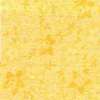Easy One Patch Baby Quilt

Finished Size: Approx. 39" x 44.5"
Introduction
While this may appear to be a 4-patch because of my fabric selections, the instructions
here are for a simple 1 patch. A 1 patch is any quilt that is made up of squares (or other
shapes) of fabric that are all cut the same size. For this example, we will be creating a
lovely baby quilt using 6" fabric squares, in two coordinating patterns.
Fabric Quantity and Selection
| Fabric
Swatch | Quantity | Cutting
Instructions |
 |
1 Yard | 28 - 6" squares |
 |
1 1/2 Yards | 28 - 6" squares
5 - 2.75" x WOF (Width of Fabric)
Strips |
Test Seam Allownaces
Using a scrap piece of fabric, sew a line in the fabric with the fabric edge along side
the presser foot. Using a hem gauge, measure the seam allowance. You need a 1/4" seam
allowance. If the test seam is not exactly 1/4", we will need to adjust your needle position
until it is. If you cannot adjust your needle position, try this trick:
Get a small stack of post-it notes, or a piece of moleskin. Aligning your needle with the
1/4" marking on your ruler, and insuring that your ruler is exactly perpindicular to the
front edge of your machine, bring the needle down, turning the hand wheel, until it is
exactly on the point of the 1/4" line marking. Hold the ruler steady so it doesn't move,
place the post-it notes or moleskin butted up against the right edge of the ruler. This will
provide a 1/4" guide for sewing your pieces together.
Sewing Instructions
Using a 1/4" seam allowances, sew squares together, alternating fabrics, to form 8 rows
of 7 squares across. Press seam allowances to the darker of the two fabric selections. Each
row should measure 39" wide.
Join each row together. Since you pressed the seam allowances always to the dark, the
seams should interlock together when you place the fabric right sides together. If you do
not feel confident about piecing the rows together as is, use pins to keep each seam
interlock together.
Press seam allowances towards the bottom of each row.
Using your largest square ruler, check each corner and insure that they are square. If
not, trim them as needed.
Sandwiching
Press your top and backing fabric nicely so that there are no wrinkles. Fold your backing
fabric in half horizontally and vertically to form 4 quadrants. Repeat for the top and the
batting.
Lay your backing fabric, right side down, on a surface such as a larger table, or the
floor. Now, using the fold marks as a guide, lay the batting on top of the backing fabric,
insuring that it is evenly centered. Finally, using the fold marks again for centering, lay
the quilt top, wrong side down, onto the batting.
Basting
Pin Basting
- Using 1" or 1.5" bent safety pins, pin the 3 sections together every 3-4" starting from
the center and working outwards.
- Do the middle horizontal first, then the middle vertical then working radially from the
center, baste the quilt together with the safety pins.
- Place additional safety pins every 3" apart along the outer borders of the quilt.
- Take care to place the safety pins in the center of the squares as we will be quilting
"in the ditch" and this will keep the pins out of the way.
Thread Basting
- Working first through the middle horizontal, then the middle vertical, thread baste the
3 pieces together using stitches approximately 3" in length.
- Once you have secured the middle sections, thread baste the rest of the quilt working
radially out from the center of the quilt.
- Secure the edges using the same standard 3" basting lengths.
Spray Basting
- Carefully fold the bottom half of the quilt top onto the top half of the quilt top.
- Following the directions on the can, spray the basting spray onto the exposed
batting.
- Smooth the bottom half of the quilt top back down onto the batting, gently smoothing as
you go to eliminate air pockets and folds in the fabric.
- Repeat for the top half of the quilt.
- Once you have completed the top, carefully turn the sandwich over, smoothing the backing
down again and making sure it is aligned correctly.
- Fold the bottom half of the backing fabric up onto the top half, spray baste the
batting, smooth the bottom half back down, and repeat for the top half.
- Check that both sides are now smooth, and reinforce the border edges of the sandwich by
pinning every 3-4" apart using bent safety pins.
Machine Quilting
**If you have a walking foot, now is the time to attach it.**
Starting in the middle, stitch a seam (I use a 4.0 length on my Viking machine) along the
"ditch" that is created by the seam allowance absence. That is, along the edge formed from
the seam allowances folded onto each other. Stitch down the entire length of the quilt.
Repeat for each row going towards the outer edges of the quilt. Repeat moving to the other
side of the quilt from the middle.
Repeat the above to quilt across the horizontal portions of the quilt.
Finishing Up
Following the instructions for attaching the binding, add the
binding and finish off your quilt.
Trim any lose threads.
Added Notes
If you prefer, you may tie the quilt instead of machine quilting it. In this case, you
will need to use two strands of perle thread (you may use embroidery floss). You may omit
the basting process for Tying. Instead, sandwich the quilt as described. Now, using about an
8" length of thread, tie a double knot through all layers of the quilt sandwich. Decide if
you want the knot to show on the top or on the bottom of the quilt and be consistent
throughout. Most battings will accomodate tying up to 3" apart, but refer to your batting
instructions to determine how close you need to place your ties.
|